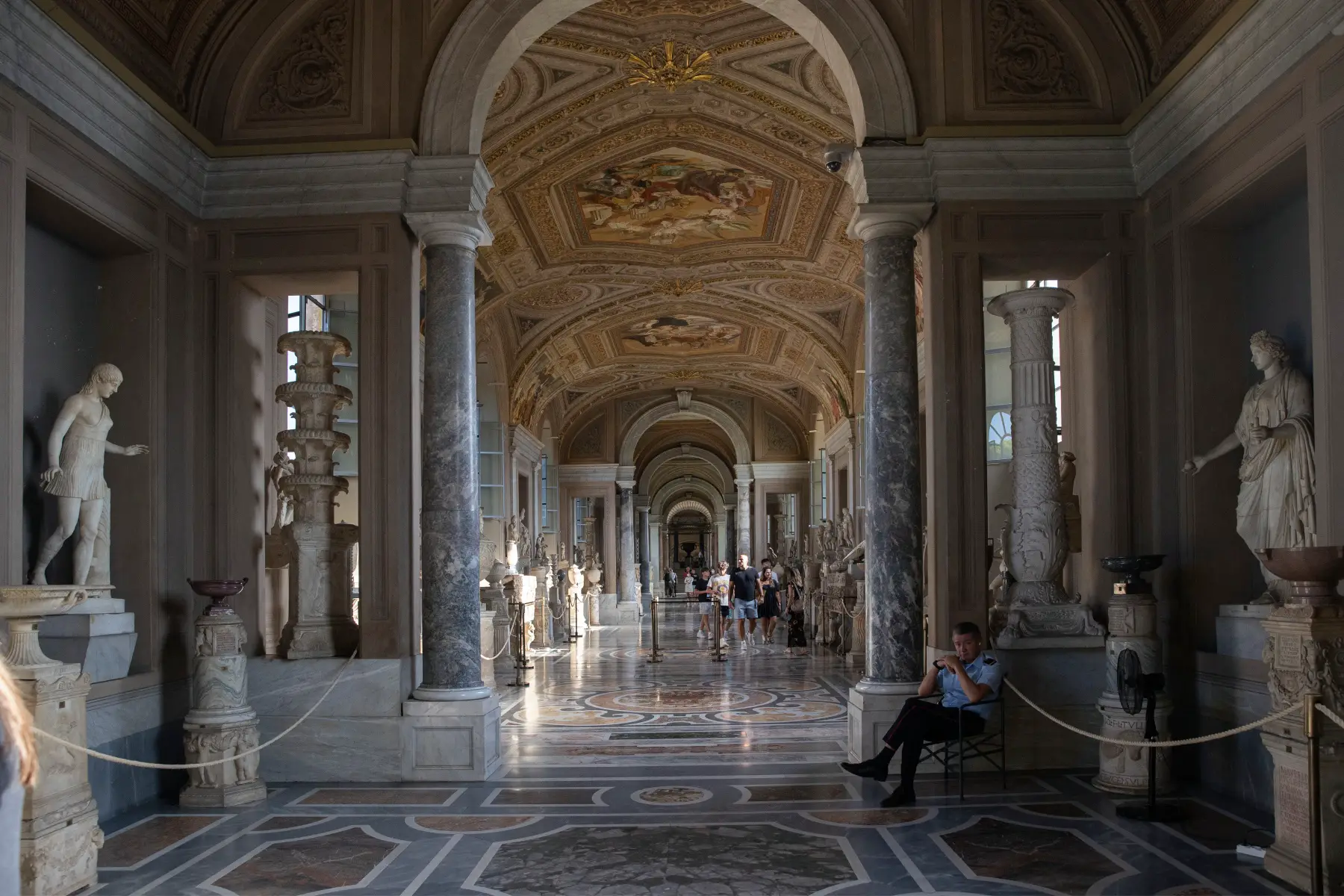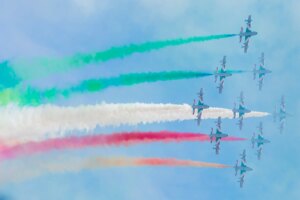Italian festivals are among the most prestigious in the world, and it’s not hard to see why. Covering everything from dazzling street parades and religious processions to raucous sporting matches and historical reenactments, they continue to attract millions of visitors from across the globe each year.
To give you an idea of what’s in store, here are the best Italian festivals to check out:
- Carnevale di Venezia (January – February)
- Storico Carnevale di Ivrea (February)
- Scoppio del Carro (March)
- Sposalizio del Mare (May)
- Il Gioco del Ponte (June)
- Calcio Storico/Calcio Fiorentino (June)
- Arena di Verona Opera Festival (June – September)
- Umbria Jazz Festival (July)
- Palio di Siena (July – August)
- Feast of San Gennaro (September)
- La Biennale di Venezia (May – November)
Airbnb
Looking for a home away from home in Italy? Airbnb is a global online community offering accommodation and experiences. They have a selection of over 6 million unique properties available through their secure booking service. So, whether you're going to Milan or Modena, Airbnb has the right short-term let for you.
Carnevale di Venezia (January – February)
Arguably the best-known of Italian festivals, Venice’s Carnevale transforms the iconic city of canals into an opulent alfresco masked ball.
Every February, around three million people descend upon Venice (Venezia) for Carnevale, transforming the city into a dizzying visual feast of elaborate costumes and masks. Participants enjoy parades, concerts, contests, and street parties where caution is thrown to the wind.
Alongside the impressive array of public events on offer are a host of glamorous masquerades and private balls that require tickets. However, you will want a plush bank account, since prices can range from between €100 and €800.

Legend has it that the festival began in 1162 to celebrate the Venetian Republic’s victory over the Ulrico di Treven, the Patriarch of Aquileia. It grew in popularity after 1296, when the Venetian Senate sanctioned it, reaching its heyday in the 18th century. However, the Holy Roman Emperor, Francis II, outlawed it in 1797, and it did not return to its full form until 1979.
The famous festival functions as a period of indulgence in the lead-up to Lent – a period where Catholics fast for 40 days before Easter.
Storico Carnevale di Ivrea (February)
Italian festivals don’t come messier than this! The ‘Battle of the Oranges‘ commemorates Ivrea’s 12th-century conflict of good versus evil, and thousands of people gather in the town to observe the free spectacle each year.
Legend has it that a local woman, Violetta, fought back against a local tyrant who got too big for his boots and rallied the townspeople to burn his palace. Nowadays, the town celebrates its ancestors’ bravery by dividing into nine teams of aranceri (orange handlers) and hurling them at each other.
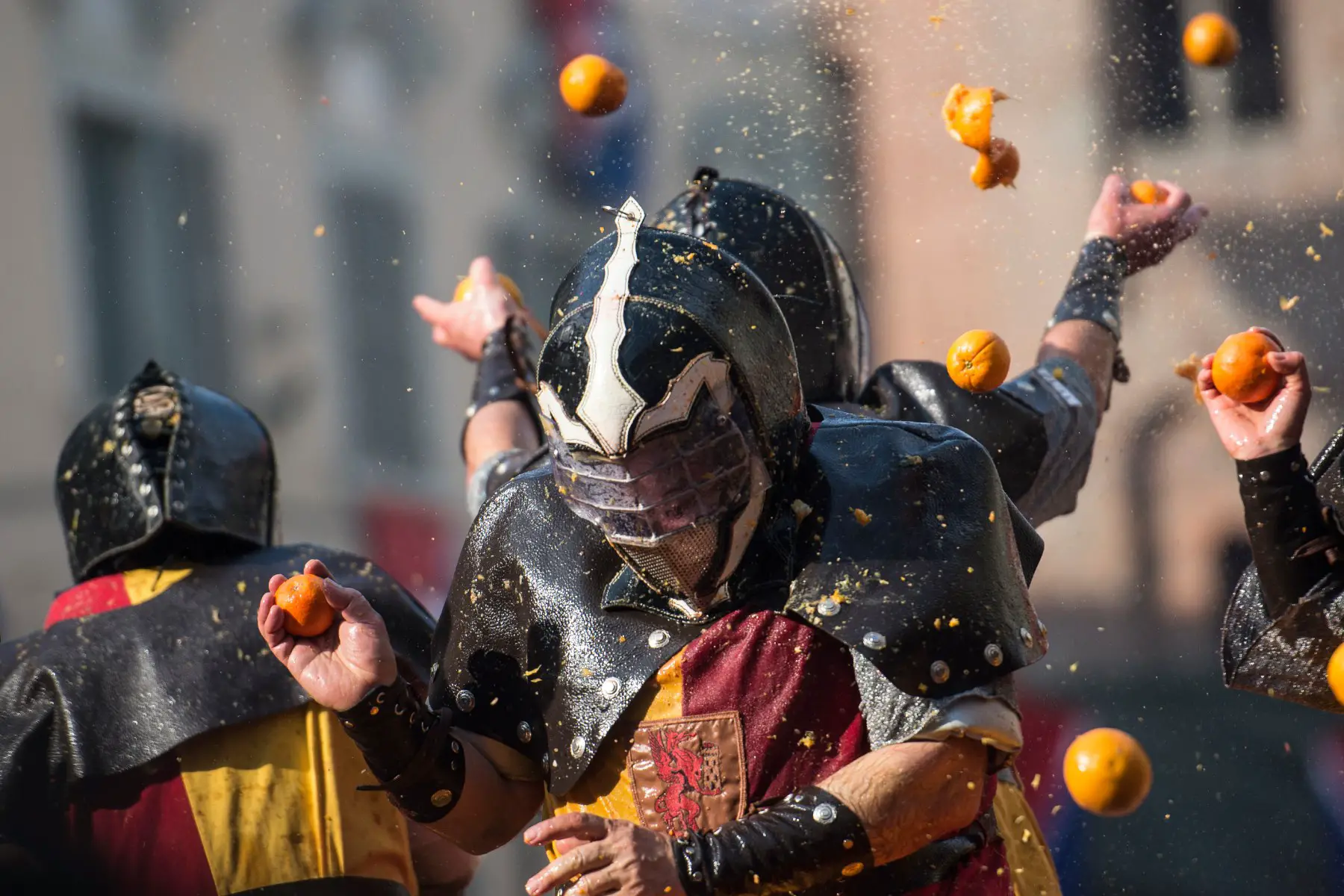
Those on the street represent the townspeople, while those on carts represent the ignoble lord. The festivities include additional observances, including choosing a new Violetta each year and building a big bonfire. Finally, the battle ends on Shrove Tuesday with the traditional greeting, “arvedse a giobia a ‘n bot” which means “we’ll see each other on Thursday at one,” which is when the carnival will begin the following year.
Scoppio del Carro (March)
The origins of this ancient Florentine tradition – also known as the ‘Explosion of the Cart‘ – stretch back to the 11th century. During the First Crusades, Florentine Pazzino de’ Pazzi scaled the walls of Jerusalem to claim Palestine for Christianity and was given three flints from the Church of the Holy Sepulchre. A tradition was soon born where the flints would light a ‘holy fire’ at Easter.
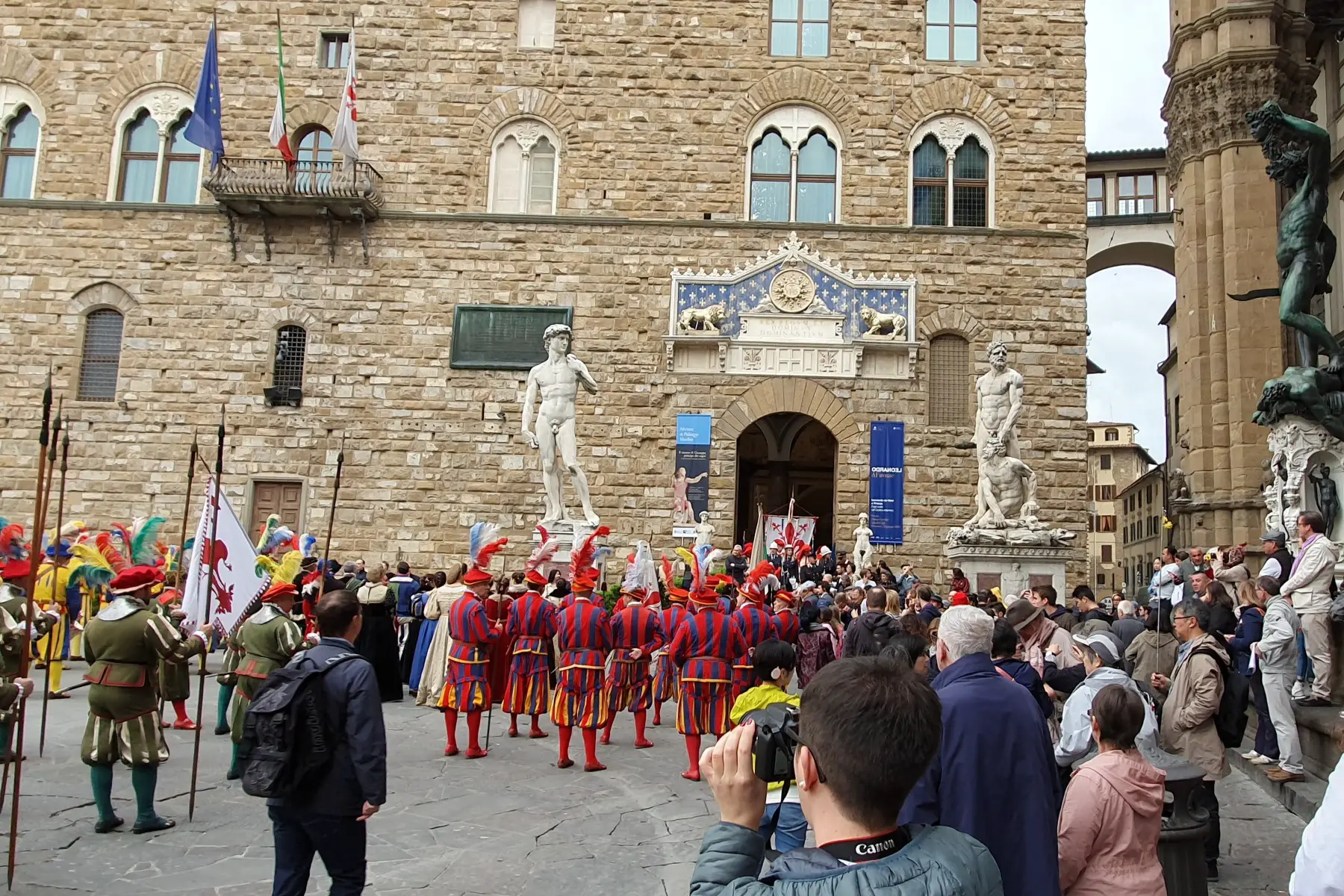
The flints now reside in Florence’s (Firenze) Chiesa dei Santi Apostoli church. On Easter Sunday, a 30-foot-tall cart (dating back to 1622) carries them to the Duomo in a parade of soldiers, musicians, revelers in 15th-century outfits, and members of the Pazzi family. In a grand finale, the cart explodes in a grand firework display alongside the ringing of the bells of Giotto’s Campanile.
Interestingly, superstition dictates that a good display means that Florence will enjoy a good harvest, stable politics, and prosperous business. Perhaps that is why most of the city gathers to watch the cart explode.
Sposalizio del Mare (May)
Venice has a rich history of seafaring and each year the ‘Marriage of the Sea‘ celebrates the city’s nautical adventuring. On the last weekend in May, row boats form a dramatic procession from St Mark’s Square to the Port of St Nicoló.
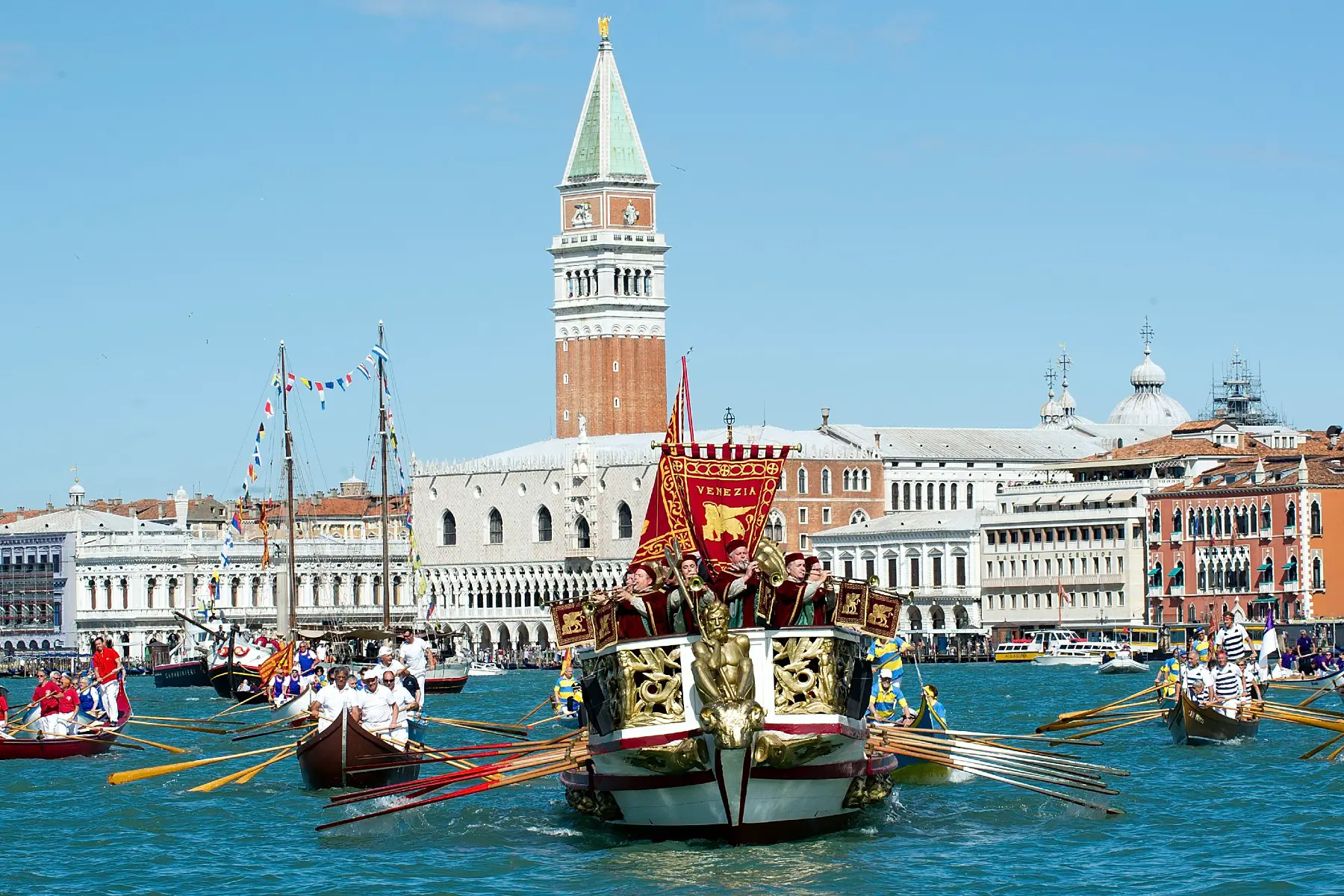
Festivities celebrate two key moments in Venice’s history. The first is Doge Pietro Orseolo II’s rescue of Dalmatian residents from persecution around the year 1000. The second is the signing of the 1177 peace treaty which put a stop to the battle between the Pope and the Venetian Republic.
By tradition, the Venetian Doge would sail his state barge – the Bucintoro – and throw a gold ring into the water. However, nowadays, the mayor of Venice assumes this role in the annual spectacle.
Il Gioco del Ponte (June)
A highlight of summer in the Tuscan town of Pisa, the ‘Game on the Bridge‘ plays out on the city’s central Ponte di Mezzo bridge. The ferocious battle originated from a 13th-century game called Mazzascudo, which pitted those living north of the Arno river against those living south of it. However, the first official Gioco del Ponte was held in 1568.
Nowadays, the battle plays out between two teams: the Mezzogiorno (from the south) and the Tramontana (from the north).
Festivities begin with the two teams parading through town in 16th-century costumes. Then, it segues into six battles where the teams, each armed with shields and clubs, try to push an iron cart across the bridge into enemy territory. A true feast for the eyes, this is one dramatic Italian festival that is not to be missed.
Calcio Storico/Calcio Fiorentino (June)
The name of this top Italian festival in Florence is a bit of a misnomer as the popular sporting match is really a combination of football, rugby, and wrestling – rather than just calcio (soccer).
The earliest version of the game dates to the 16th century and probably comes from Harpastum, a sport that was popular among the ancient Roman legionnaires. However, its official rules were written by Count Giovanni de Bardi in 1580.
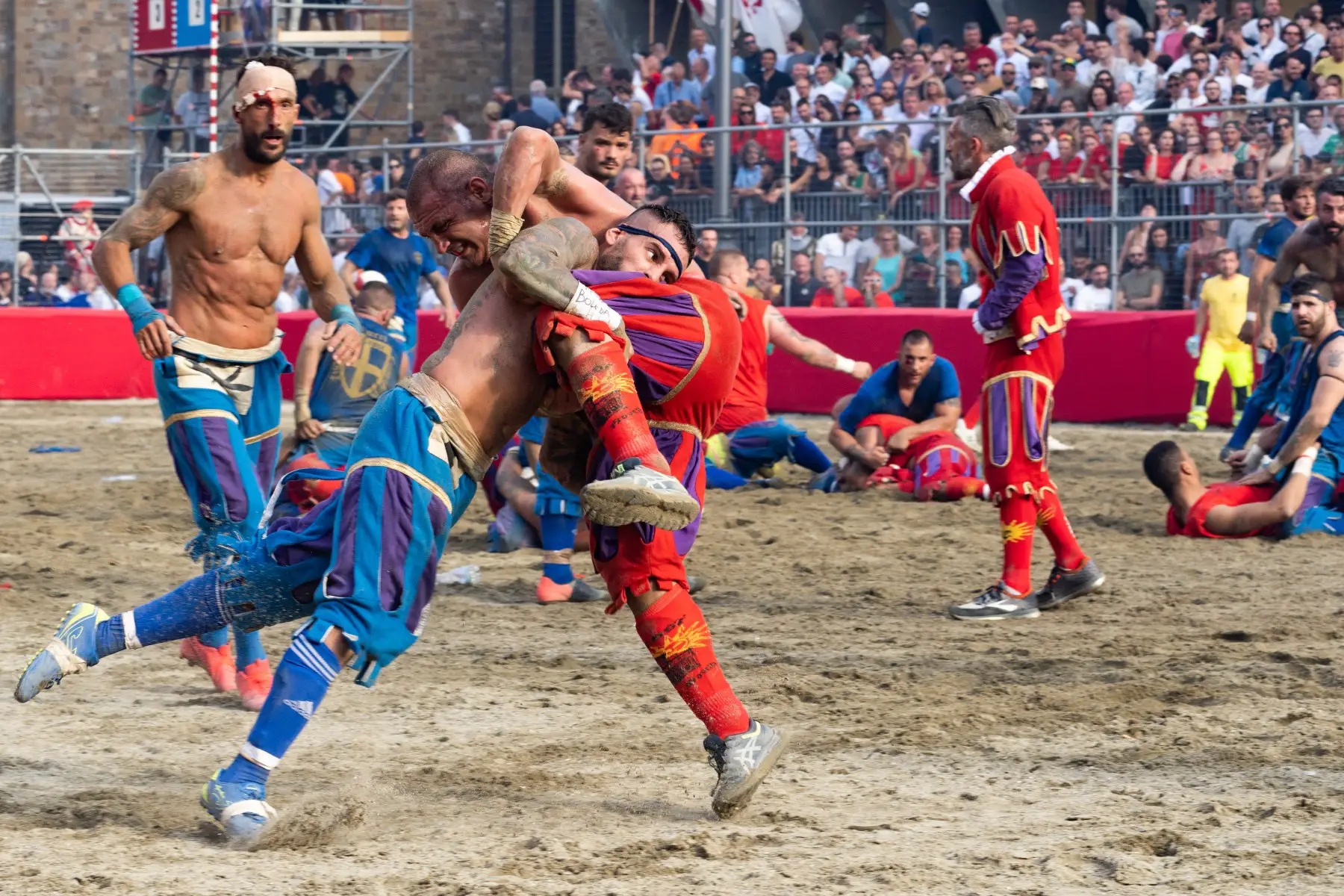
Today, four teams from the city’s historical districts – Santa Croce, Santa Maria Novella, Santo Spirito, and San Giovanni – compete in a violent display while wearing historical costumes.
There are three matches in all – two semis and a final – and, unlike soccer, anything goes. Therefore, the referee will not be calling a foul for kicks, punches, pushing and pulling, or anything else. The matches start with the firing of a canon, and the victors receive a Chianina cow.
Arena di Verona Opera Festival (June – September)
Throughout the summer, Verona’s majestic Roman arena, which happens to be the largest in the world, hosts a spectacular celebration of opera. That said, visitors can also enjoy an array of ballet and classical music performances. The popular Italian festival began in 1913 with a staging of Aida to celebrate the 100th birthday of Italian opera composer, Giuseppe Verdi.
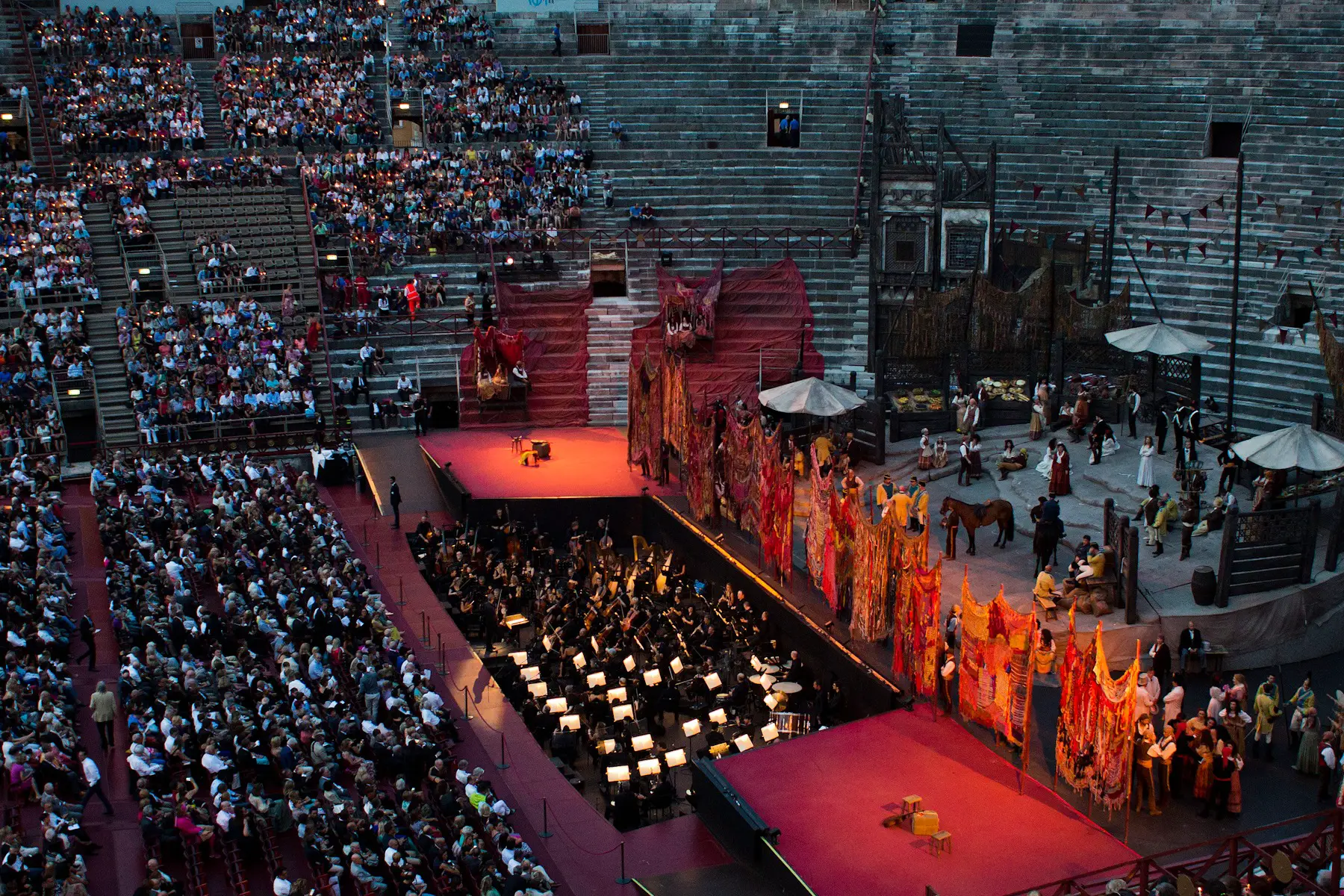
Audiences can still watch Aida each year, alongside famous operas such as Rigoletto, Turandot, Carmen, and La Traviata. Maria Callas, the famous American-Greek soprano, made her debut on this stage, as well as a slew of other notable performers.
Each night, the shows kick off after dark and audiences use mocoletto (small candles) to add to the atmosphere. Ticket prices range from between €32 and €330, depending on the seating level you choose.
Umbria Jazz Festival (July)
After its humble beginnings in 1973, this dazzling display of music has grown to become one of the most important Italian festivals of the year. For just ten lazy, hazy, crazy summer days, the Umbrian city of Perugia falls under the spell of jazz music. So much so, in fact, that you can hear it everywhere – on the streets, in venues, and even in churches.
While many performances are free, you will have to pay for tickets to see the big names and can expect to shell out at least €20.
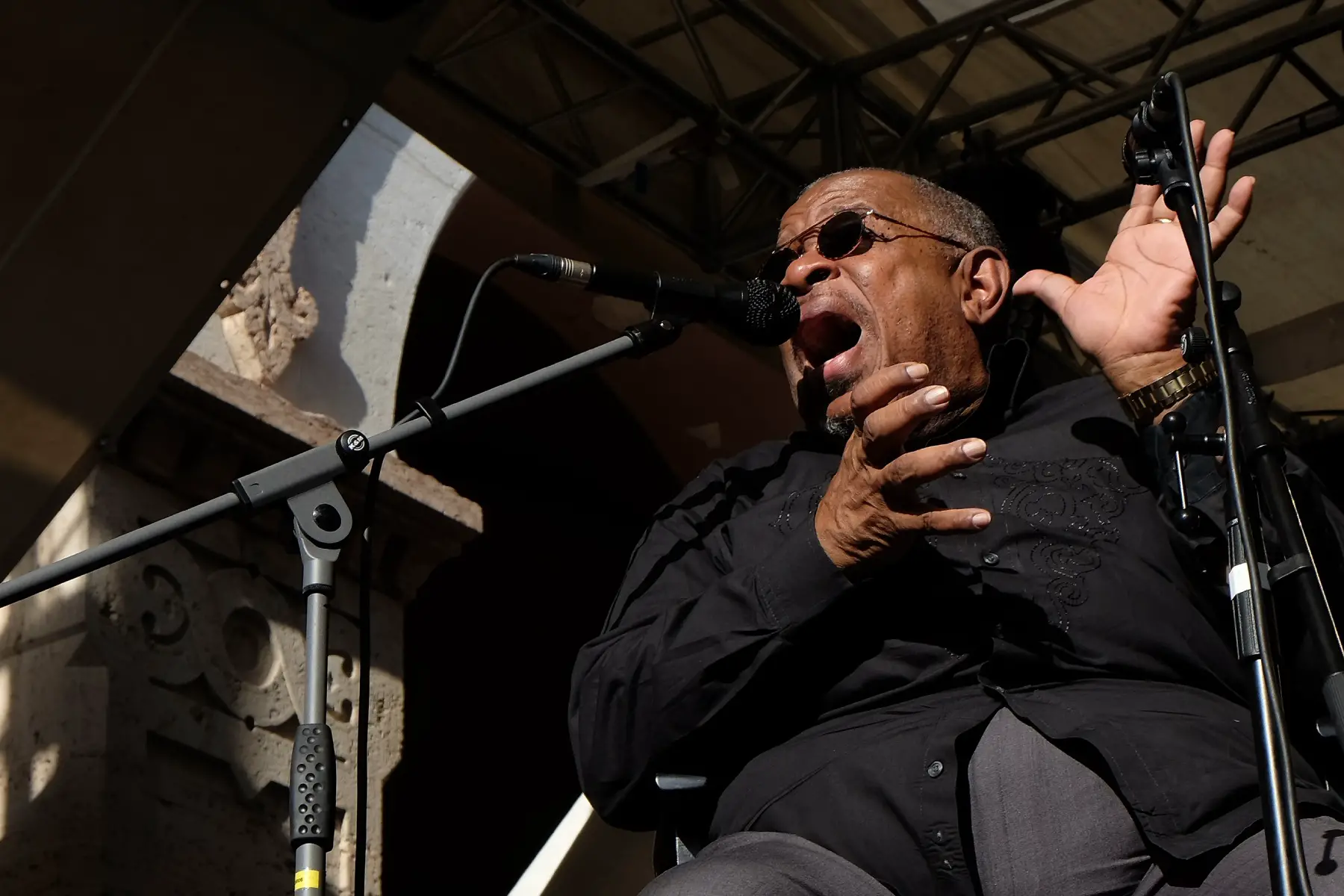
Past performers are the crème-de-la-crème of the genre, including BB King, Miles Davis, Herbie Hancock, Chet Baker, Tony Bennet, Miles David, and Natalie Cole. That said, the festival is happy to branch out, meaning everyone from Carlos Santa and Eric Clapton to Lady Gaga and Prince has appeared.
Luckily, if you can’t make the festival in Perugia, you’ll have a second chance to attend it in the town of Orvieto in winter.
Palio di Siena (July – August)
Imagine a city-wide horse race that runs through a medieval town in Tuscany, and you still wouldn’t get close to recreating the spectacularity of Palio di Siena.
This truly iconic event has been in existence since 1287 and sees ten of the 17 neighborhoods of Siena soaring by the historical central square of Piazza del Campo in the blink of an eye. The horse race actually takes place in two stages – on 2 July and 16 August – and has many rules and regulations that are often only known to the various Sienese districts.
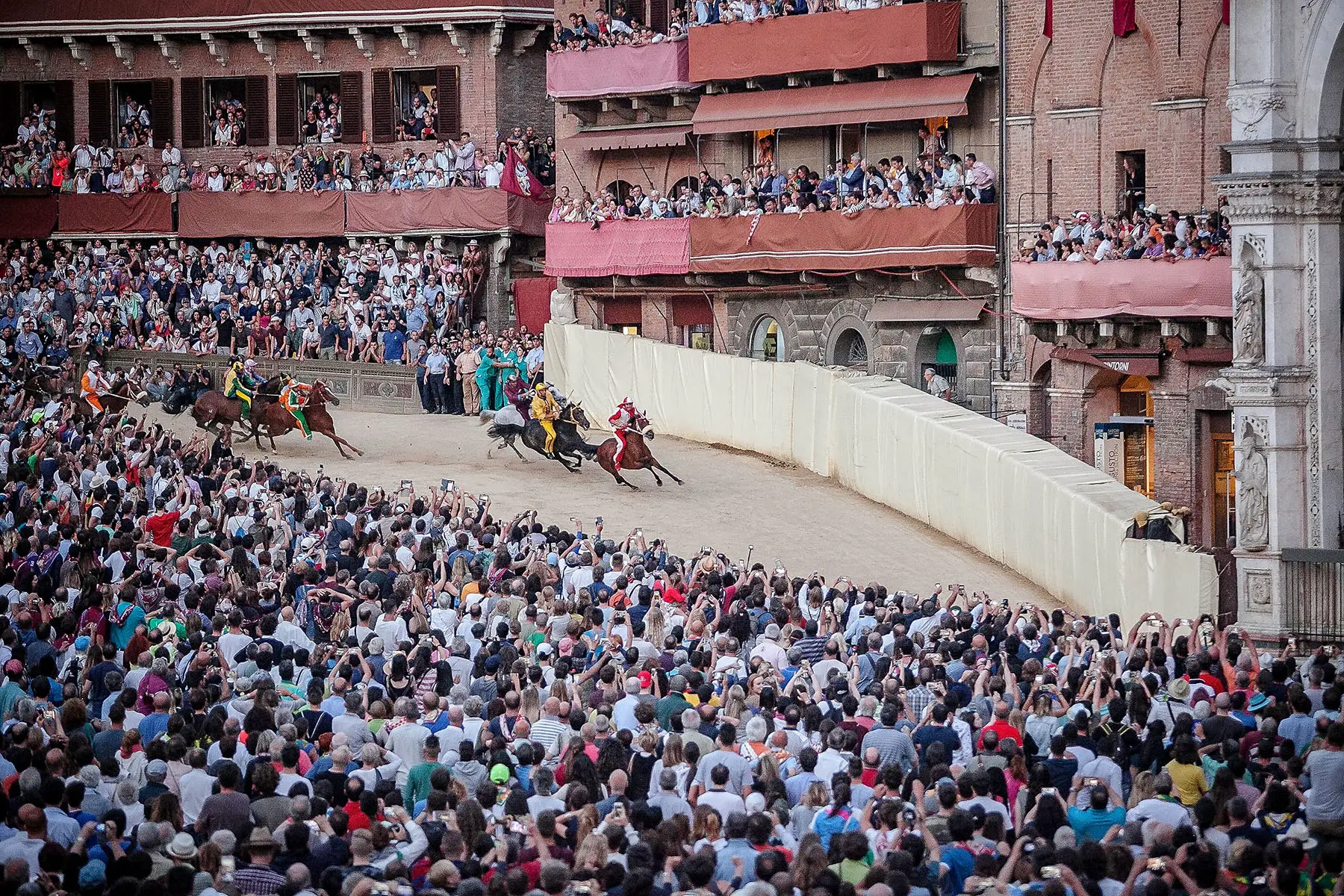
What makes this epic event unmissable is the electric atmosphere, celebrations, parades, historical costumes, and – of course – the incredible sporting feat of the horses and their racers.
You can access the Piazza del Campo for free, but make sure to arrive as early as 16:00, as it fills up fast. It’s also good to keep in mind that there are no public toilets around. Moreover, due to the large crowds, it is ill-advised to bring children. Instead, you might be better off buying a ticket to view the event from one of the bleachers or on the balconies that face the Piazza.
Feast of San Gennaro (September)
There are more religious Italian festivals than you could ever attend – but this may take the cake. Every year, on 19 September, thousands of adherents gather at the Cathedral of Naples (Napoli) for a truly unique ceremony. The city’s cardinal removes its holiest relic – a vial of blood said to be Saint Gennaro’s – from the Cathedral’s chapel and crowds pray for it to liquefy before their eyes.
Locals believe that if it remains dry, disaster will come to Naples. And indeed, in November 1980, Naples was hit by an earthquake after the blood did not liquefy. The reliquary remains on display for eight days and throughout this period, there are parades, processions, and religious entertainment.
La Biennale di Venezia (May – November)
The jewel in the crown of Italian festivals, the Venice Biennale, attracts millions of visitors to the city each year. In existence since 1895, the festival consists of six events held across several months. The main event usually spans half a year, beginning in April or May and running through November.
Interestingly, the focus each year alternates between art and architecture. That said, every rendition includes a theatre event (June/July), a dance festival (July), and a music festival (September/October).
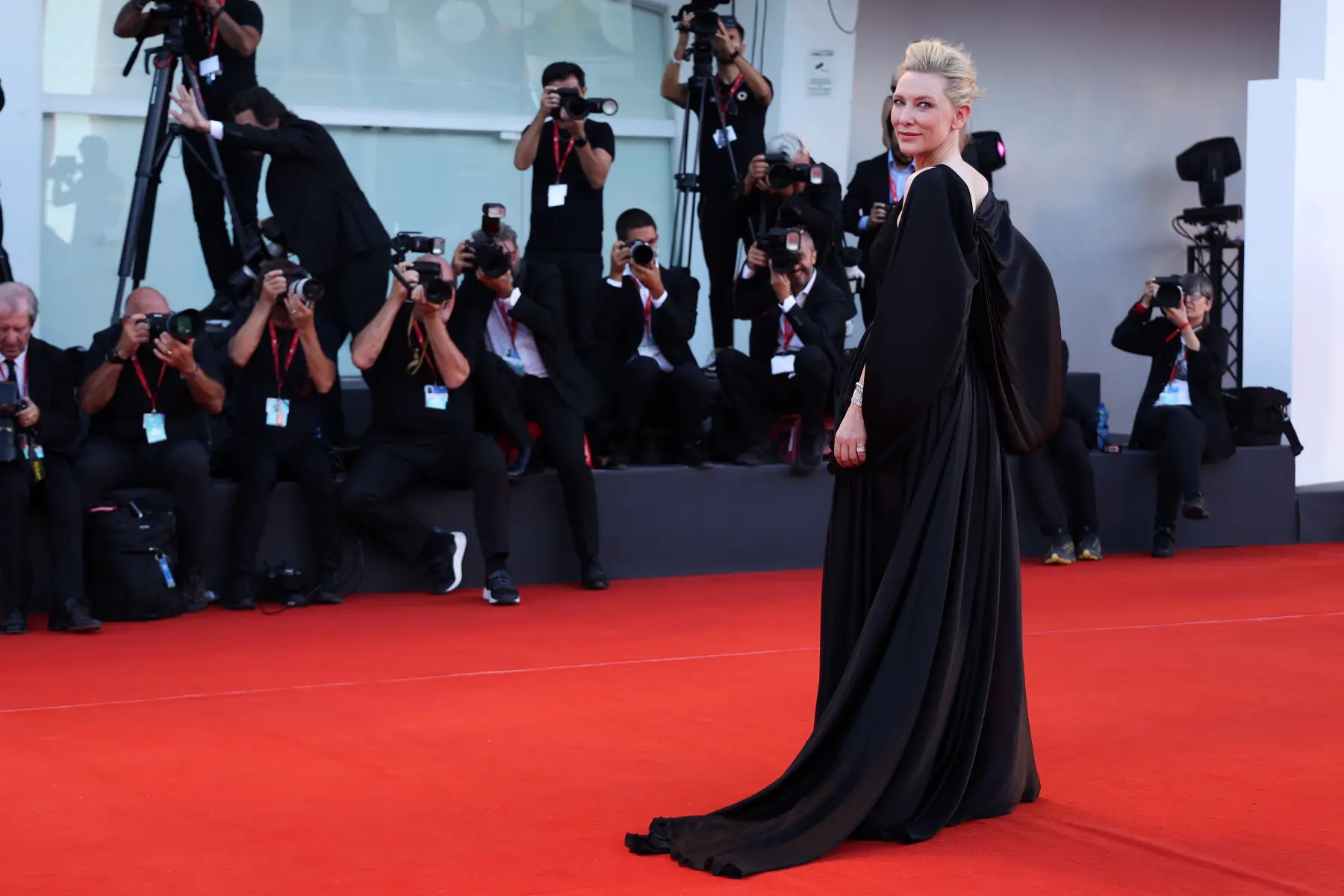
The Venice International Film Festival, one of the city’s most glamorous events, is also part of the Biennale. During the festival, spectators can attend a wealth of events across the city in Castello, the Arsenale, the Biennale Gardens, the Lido, and other notable locations.
Historically, the Biennale focused on Italian artists, however, it has slowly become more international. In fact, the 1910 exhibition brought together luminaries such as Gustav Klimt, Renoir, and Picasso.
Ticket prices are usually €25 for the art and architecture editions, while film events range from €5 to €50, dance and performances start at €5, and theatre shows begin at €5.



